Investigating the Top 50 Cryptocurrencies, Part 18/50: Ardor
Ardor is a blockchain which allows people to create “child chains” that operate independently from the parent chain but retain interoperability between the chains. Think of it like off-brand ethereum with its own flavor of ERC-20-style tokens.

Ardor offers a lot of impressive technology. Their blockchain system makes it possible for anybody to issue a new token with the features fine-tuned for their own personal needs. Customizability is a big part of the process.
The issue with ardor is on the management side. This is a very centralized blockchain. A large aspect of this whole project seems to be that the parent company, Jelurida, will charge people money to create and manage their blockchains for them.
This post will take a deep look at what ardor does and what its prospects are for the future.
About This Series + Disclaimer
This post is part of a new series where I investigate each of the top 50 coins by marketcap (based on coinmarketcap.com's rankings on October 11, 2017). My goal is to help steem’s userbase become the most knowledgable blockchain community in the world.
Disclaimer: I am not an investment expert and will not be providing investment advice. I will teach you about the top 50 coins, and you can do what you want with that info.
Ardor Does Not Use Sidechains
The most emphasized aspect of the entire 50+ page white paper is this fact: The issued tokens are not built on “sidechains,” they are (as Jelurida calls them) “child chains,” the children of the “parent chain” such as Ardor.

Jerulida is the parent company of Aldor Platform
The difference between “sidechains” and “child chains” is that the latter are more closely related to their source. Child chain tokens are exchangeable for any other token from the same parent without an exchange. Sidechains are more independent and require their own security/processing.
In this system, the parent chains are paramount. They do the bulk of the work and account for most of the blockchain’s settings. The parent chain is what keeps all the other tokens liquid and working.
NXT, Ardor, and Ignis
There are three different tokens described in the white paper. The differences between them are subtle in some cases.
The most basic thing is that NXT is its own blockchain. It has a token (NXT) and you can issue tokens on it (like ERC-20, but not using ethereum) if you want.
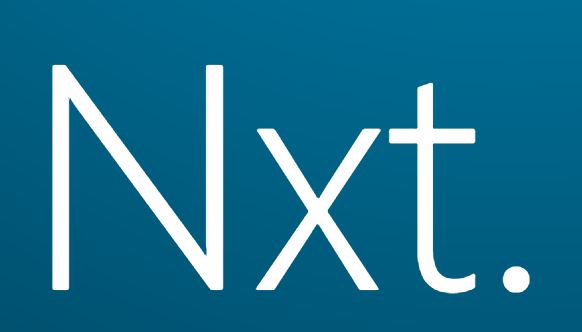
Nxt is its own thing btw
Ardor is similar to NXT, except it is already a parent chain. The child chain token associated with Ardor is Ignis. Ignis has its own tokens too. I found all of this to be confusing. So many tokens and blockchains that it’s hard to keep it all together in my brain.
The Purpose of Ardor
The ultimate purpose of this whole system is to create a way for any company to use blockchains for anything they want. Ardor prioritizes lowering the friction for any newcomers to start their first blockchain. It’s supposedly easier than other options for issuing your own token right now.
However ardor has some serious competition. Ethereum is the elephant in the room as it seems to accomplish the majority of what ardor is trying to do. EOS is rising to compete with ETH - will ardor even be a blip on a radar with all of that going on?
Token Distribution
This is where it gets really confusing. Here’s the white paper explaining how some initial tokens are distributed: ”The total amount of IGNIS coins issued will be equal to half the amount of NXT coins existing on the Nxt blockchain at the time of the Ardor Genesis Snapshot, plus 500 M (five hundred million).”
The main thing to understand here is that the initial IGNIS token distribution is a 1:1 distribution for NXT holders. After that, they are crowdselling more tokens, this time distributing JLRDA tokens in exchange for NXT for five weeks.
Here’s the schedule of crowdsale prices (from the white paper again):
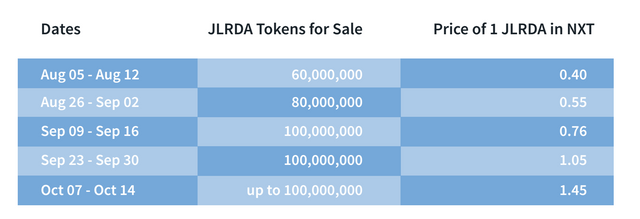
If I am understanding this correctly, JRLDA tokens will be transferable 1:1 for IGNIS tokens when the blockchain launches. They are a placeholder currency.
The Ardor Team
There are four people listed as part of the Ardor team on their website.
Kristina Kalcheva
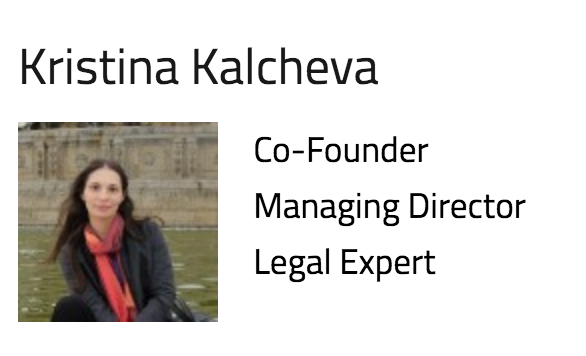
Kristina holds a Masters in law and international relations, bringing her law-focused perspective to the project. Her role involves researching the legality and enforceability of open source licensing models, as well as researching real life applications for blockchain.
Lior Yaffe
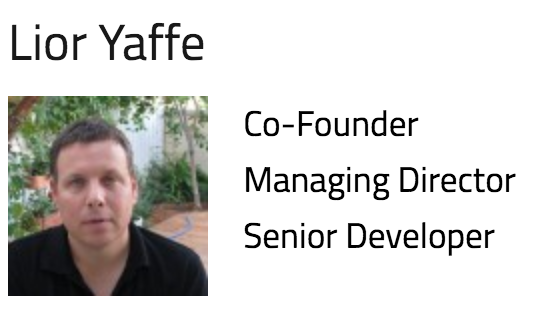
Lior is responsible for a lot of the programming that happens on Ardor and other Jerulda projects. He has a B.S. in computer science and a long history of working with computers. His specialty is ”software development of enterprise applications”.
Petro Petkov
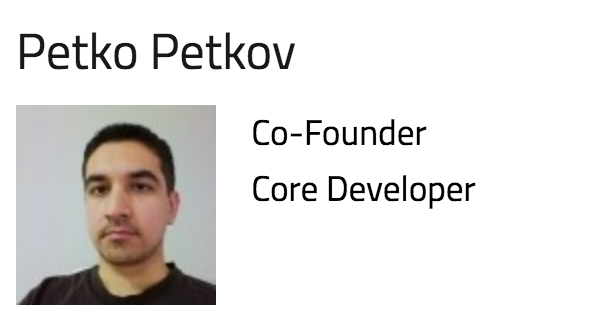
Petro is a software developer with a similar background to Lior. His experience includes work with financial systems and mobile development. He brings a useful set of skills to the Jerulda team.
Tomislav Gountchev
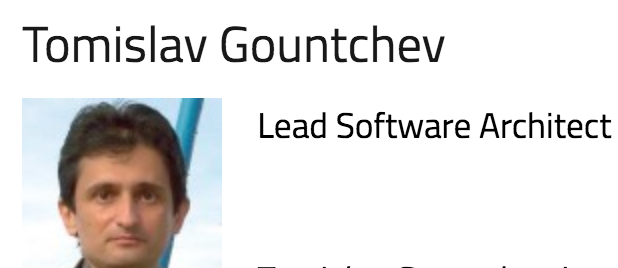
Tomislav is a server-side Java developer who has a B.A. in natural sciences and has worked as an engineer for various companies in silicon valley. His obsession with Java took up most of his early career prior to his discovery of blockchain.
Market History
Ardor is doing well in its first year as a token.
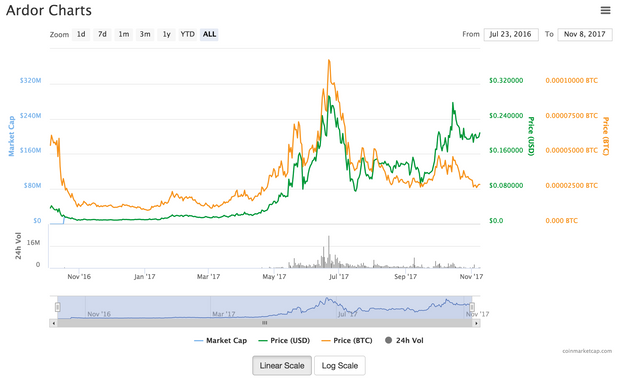
We saw a slow buildup to an initial moon, followed by a multi-month dip leading into its current revival to its previous high price. Will it continue to climb or dip again?
The token’s performance at the end of October and first week of November has been impressive… it’s hard to say what will come next. Perhaps after the Nov. 16th BTC fork people will rush back into alts and aldor will gain even more value. Or, perhaps the price will correct back downward like the last time it had this high a valuation.
Final Thoughts
Ardor is a reasonable token but I don’t see it getting a big footing in the market. It doesn’t have too many unique features and the multi-token structure has me confused. There are simpler blockchains out there achieving this same result.
With that said, I am impressed with the organization of the project. I hope that I am wrong and that it all works out. We’ll see what happens in the next few months.
Do you have any experience with Ardor? What do you think of it?

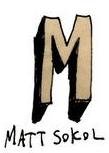
Thanks very good post !!!!
Awesome Work!

Keep it up!!!
@cryptoinvestinfo
your CryptoInvestmentExpert
glad you liked it, thank you
Thanks for this info. Ardor is interesting, and NXT always had some great projects going on. But you're right that it's confusing. I'm still trying to wrap my head around it.
One question: Isn't the initial IGNIS token distribution actually a 0.5 to 1 exchange for NXT holders?